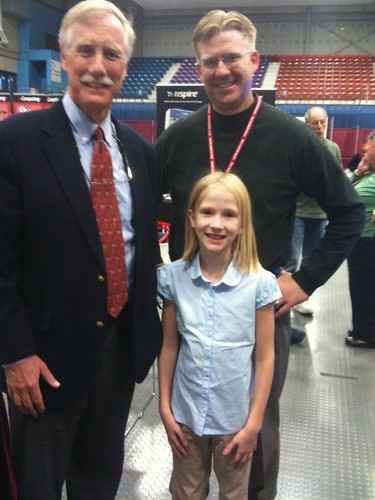Today’s decision by the Oklahoma State School Board to keep public K-12 schools closed for the remainder of the 2019-20 academic year will have both short term and long term repercussions for students and families in our state. Virtually overnight (pun intended) all 500+ public school districts in our state are now required to move to distance learning. Immediately.
Oklahoma’s 700,000 public school students will navigate education at home, as school districts follow a state order to implement distance learning for the rest of the academic year.
Along with Kansas and Virginia, Oklahoma public schools will close their buildings to prevent spread of the COVID-19 pandemic. Students will begin distance learning April 6.
“Coronavirus in Oklahoma: Public Schools Move to Distance Learning.” Oklahoman.Com, 25 Mar. 2020, https://oklahoman.com/article/5658593/coronavirus-in-oklahoma-public-schools-move-to-distance-learning/.
Our school (Casady School) has been spending the past four weeks developing and starting to implement “remote learning” plans for each of our four school divisions, which include a little over 900 students. Today was “orientation day” for all our students, parents and teachers, and tomorrow (Thursday, March 26th) “remote learning” begins for all students in all classes.
We are fortunate that the vast majority of our school constituents have both high speed Internet connectivity at home, as well as the ability to support BYOD (bring your own device) learning at home. For those families without a digital learning device (laptop or iPad) for each student enrolled in our school, we’ve been able to check out a device via our shared carts of Chromebooks and iPads.
This is NOT the case in many Oklahoma public school districts. I spoke yesterday with a friend in a district in a much smaller community in Oklahoma (relative to Oklahoma City) which exemplifies the “digital divide” that is the NORM in our state. Their district has a high school population where at least one-fourth of all students do NOT have home high speed Internet access. One grade level has Chromebook laptops, but three others do not today. Not only does the COVID-19 pandemic present dramatic health challenges to the families and communities of our state, but now it is upending the predominant educational and learning paradigm of our schools. While some state educational leaders question the practicality of schools not previously prepared with equipment and professional development training moving to a distance learning model, it appears this WILL be our path forward for public schools, students, teachers and families in the weeks and months ahead.
Here are some of the thoughts I have about this situation and the action steps which will be required in the days ahead.
OLTI: The Oklahoma Learning Technology Initiative
Like the Maine Learning Technology Initiative, our state now requires an Oklahoma Learning Technology Initiative (OLTI). This should be a comprehensive, well-funded initiative to provide not only hardware and software solutions to teachers and students, but also the home Internet connectivity required for “modern digital learning” as well as sustained, continuous professional development to support teachers, administrators, and families in this historic, moonshot-level, transformative educational endeavor.
Digital Learning Devices for All Students and Teachers
The educational equity challenges we face as a state are staggering. Due in part to an educational funding process and formula I am convinced was designed to intentionally confuse citizens and obstruct reform to support “adequate funding,” we have chronically underfunded our schools in Oklahoma for decades. All states and governments everywhere are by necessity led by “elites,” but in Oklahoma we have a particularly toxic political culture which has held taxation for public benefit to be anathema. The result is we have some suburban school districts like Norman Public Schools and Edmond Public Schools which provide a mobile, digital learning device TODAY for every student in certain grades. We have many urban and rural public school districts, however, which do NOT provide any kind of digital learning device to students. This is not just the result of inadequate state and local funding for schools, however. It’s also a function of leadership and vision. Crescent Public Schools was a leader in 1 to 1 learning in Oklahoma ten years ago. Putnam City Schools has literally thousands of iPads deployed in the hands of students and teachers, and has made local funding decisions to sustain their modern learning program despite the shortcomings of our overall educational funding paradigm.
What is required today is a substantial shift in the ways Oklahoma schools are funded and sustained. Each student now requires:
- a digital learning device (most likely either a Chromebook or iPad)
- high speed home Internet connectivity
- an interactive learning platform for information and assignment exchange with teachers (We primarily use Google Classroom and Seesaw. Edmond PS uses Canvas. Each classroom teacher needs an interactive platform to support modern digital learning, but these platforms may continue to vary by school and district.)
- a teacher who is a connected educator, capable of learning through both independent, self-directed learning modules as well as synchronous, in-person or virtual professional development training.
Community WiFi Networks
We are going to need regional and national Internet service providers to marshall resources to create community WiFi networks to serve students, teachers and families. Large telecoms like AT&T do not want to do this, because the ROI (return on investment) is minimal or negative when this is done in small communities like those served by most of our rural schools. I know this because I worked for AT&T for two years, and I’ve researched and worked with state connectivity issues (like E-Rate) for years as a professional educator. The global pandemic we face is unlike anything we’ve confronted in our lifetimes. ROI cannot continue to be an obstacle to the creation of community WiFi networks as it has been in the past.
5G cellular technologies are “just around the corner” but they are not going to be able to meet the challenges of Oklahoma remote learning in the next 1 to 18 months. Not only is 5G cellular network infrastructure not widely available yet, the end-user / client side devices are not even on the market yet in mass… and with the upcoming challenges to our global supply chains brought on by COVID-19, the short term prospects for manufacturing and deploying large numbers of Chromebooks or iPads for student and teacher use are formidable. Partnerships with vendors and manufacturers in this situation will be essential. As with all 1 to 1 learning initiatives, the issues to keep in mind are far more than just “how cheaply can I get a vendor to deliver these laptops to my loading dock?” MLTI in Maine was initially a multi-level partnership between the state and Apple Computer, where the provision of high speed Internet connectivity to every Maine School and library was an essential component of the program.
Oklahoma will need to partner with educational technology vendors who can offer similar, multi-tiered solutions to hardware, software, connectivity, security, and professional development needs.
Addressing All “The Legs” of the Modern Digital Learning Table
In January 2020, a team of 9 educators from our school visited four different schools in Dallas, Texas, to learn more about their 1 to 1 Learning programs and initiatives. As a result of that trip and the thinking it inspired, I wrote the post, “Modern Learning in School: The 14 Legs of the Table,” and created the following graphic.
This visual is intended to represent the multitude of issues involved in implementing, supporting, and sustaining a one-to-one learning initiative, by which I mean a learning project (I prefer the term “modern learning”) in which each student and teacher is equipped with a mobile learning device as well as software, training, support, connectivity, and more.
As formidable as the challenges facing Oklahoma public school leaders, legislators and citizens are today with COVID-19 and specifically these educational needs, it’s important to remember that the TOOLS we have for collaboration, idea sharing, and distributed learning are better than ever in earth history. That’s not hyperbole, it’s a fact.
Honestly, I’ve wanted OLTI to become a reality ever since I moved to Oklahoma with our family in 2006. My February 2006 post, “Laptops are 21st Century Pencils,” is a documented example of this thinking that’s now 14 years old. I certainly don’t look forward to the medical crisis and health emergency which we’re poised to experience in Oklahoma because of COVID-19 in the next two to four weeks. But I AM glad this pandemic is going to force us to not only face but also constructively address horrific educational and learning equity issues in our state which should morally outrage each one of us as taxpayers, parents, grandparents, and members of our communities.
Will the visionary educational leaders in our state please step forward? I’m so thankful Joy Hoffmeister (@joy4ok) is our State Superintendent for Public Instruction, and will be shepherding / leading us as a state through the challenging days which lie ahead. It’s time to get and remain connected, and advocate for our students and families as together we engage in “remote learning” for the foreseeable future.

“Angus King, Wesley and Sarah Fryer at ACTEM09” (CC BY-SA 2.0) by Wesley Fryer
If you enjoyed this post and found it useful, consider subscribing to Wes’ free, weekly newsletter. Generally Wes shares a new edition on Monday mornings, and it includes a TIP, a TOOL, a TEXT (article to read) and a TUTORIAL video. You can also check out past editions of Wes’ newsletter online free!
Did you know Wes has published several eBooks and “eBook singles?” 1 of them is available free! Check them out! Also visit Wes’ subscription-based tutorial VIDEO library supporting technology integrating teachers worldwide!
MORE WAYS TO LEARN WITH WES: Do you use a smartphone or tablet? Subscribe to Wes’ free magazine “iReading” on Flipboard! Follow Dr. Wesley Fryer on Twitter (@wfryer), Facebook and Google+. Also “like” Wes’ Facebook page for “Speed of Creativity Learning”. Don’t miss Wesley’s latest technology integration project, “Show With Media: What Do You Want to CREATE Today?”










